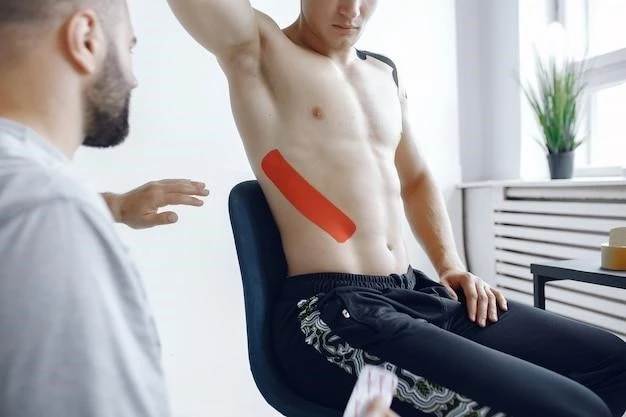Understanding Gluteal Muscle Atrophy
The causes of gluteal muscle atrophy can include prolonged inactivity, nerve damage, or certain medical conditions.
Causes of Gluteal Muscle Atrophy
Gluteal muscle atrophy can be caused by various factors such as prolonged immobilization after injury or surgery, nerve damage affecting the gluteal muscles, certain medical conditions like muscle dystrophy or neurological disorders that weaken muscle function, and age-related muscle loss known as sarcopenia. Inactivity due to a sedentary lifestyle or prolonged bed rest can also contribute to muscle wasting. Additionally, inadequate nutrition leading to protein deficiency can impact muscle health, including the gluteal muscles. Understanding these causes is important for developing effective treatment and prevention strategies to address gluteal muscle atrophy.
Impact of Gluteal Muscle Dysfunction on Mobility
Gluteal muscle dysfunction can significantly impair mobility and stability. These muscles play a crucial role in various movements such as walking, climbing stairs, standing up from a seated position, and maintaining balance. When the gluteal muscles are weak or atrophied, it can lead to altered gait patterns, decreased hip stability, and lower back pain. Individuals may experience difficulty with activities of daily living and have an increased risk of falls due to compromised balance and coordination. Restoring strength and function in the gluteal muscles is essential in improving mobility and overall quality of life.
Treatment and Prevention
Addressing gluteal muscle weakness through targeted exercises can help prevent atrophy and improve muscle function.
Treatment Options for Gluteal Muscle Weakness
There are several treatment options for gluteal muscle weakness, including physical therapy focusing on strengthening exercises targeted at the gluteal muscles. Incorporating resistance training, balance exercises, and functional movements can help rebuild muscle strength and improve overall function. Electrical stimulation and manual therapy techniques may also be utilized to enhance muscle activation and promote recovery. In some cases, healthcare providers may recommend the use of assistive devices or orthotics to support proper alignment and movement. It is important to individualize treatment plans based on the underlying cause of muscle weakness to achieve optimal outcomes.
Prevention of Gluteal Muscle Loss
To prevent gluteal muscle loss, individuals should engage in regular physical activity that includes targeted exercises for the gluteal muscles. Maintaining an active lifestyle, incorporating strength training, cardiovascular exercise, and flexibility workouts can help preserve muscle mass and function. Adequate nutrition with a focus on protein intake is essential for muscle health. Avoiding prolonged periods of inactivity or immobilization is crucial in preventing muscle atrophy. Proper posture and body mechanics during daily activities can also contribute to the prevention of gluteal muscle loss. By prioritizing exercise and healthy living habits, individuals can reduce the risk of muscle deterioration and maintain optimal musculoskeletal function.

Management Strategies
To address gluteal muscle atrophy, various management strategies include targeted exercises, surgical interventions, and rehabilitation plans.
Exercises to Strengthen Gluteal Muscles
Effective exercises to strengthen gluteal muscles include squats, lunges, hip thrusts, and clamshells. Incorporating resistance bands, weights, and stability balls can add challenge and variety to workouts. Focusing on proper form and muscle activation is key to maximizing the benefits of each exercise. Additionally, including functional movements that mimic daily activities can help improve muscle coordination and stability. It is essential to progress gradually and tailor exercise routines to individual needs and abilities to achieve optimal results in strengthening the gluteal muscles;
Surgical Interventions for Gluteal Muscle Absence
In cases where gluteal muscle absence is present, surgical interventions like muscle or tendon transfers may be considered to restore function. Procedures such as gluteal augmentation with implants or autologous fat transfer can also be options to enhance muscle contour and volume. Surgical consultations with healthcare providers specializing in muscle reconstruction can help determine the most suitable intervention based on individual needs and goals. Pre-operative and post-operative rehabilitation programs may be recommended to optimize recovery and functional outcomes following surgical procedures for gluteal muscle absence.
Rehabilitation Strategies for Gluteal Muscle Atrophy
Rehabilitation strategies for gluteal muscle atrophy may include a combination of physical therapy, targeted exercises, and functional training. Physical therapists can design personalized rehabilitation programs to improve muscle strength, flexibility, and coordination in the gluteal muscles. Modalities such as electrical stimulation and massage therapy may be used to enhance muscle activation and tissue healing. Progressive resistance training and proprioceptive exercises can aid in rebuilding muscle mass and restoring mobility. Education on proper body mechanics and posture can help prevent further muscle deterioration. Consistent participation in rehabilitation sessions and adherence to home exercise programs are essential for achieving positive outcomes in gluteal muscle recovery;
